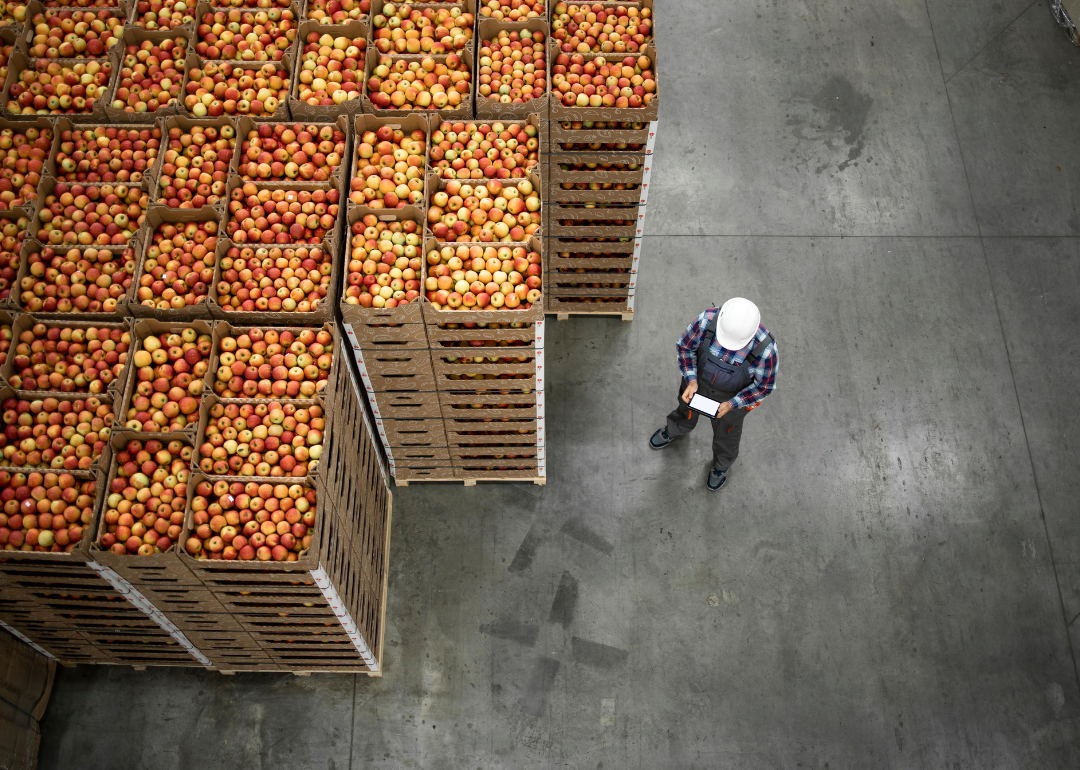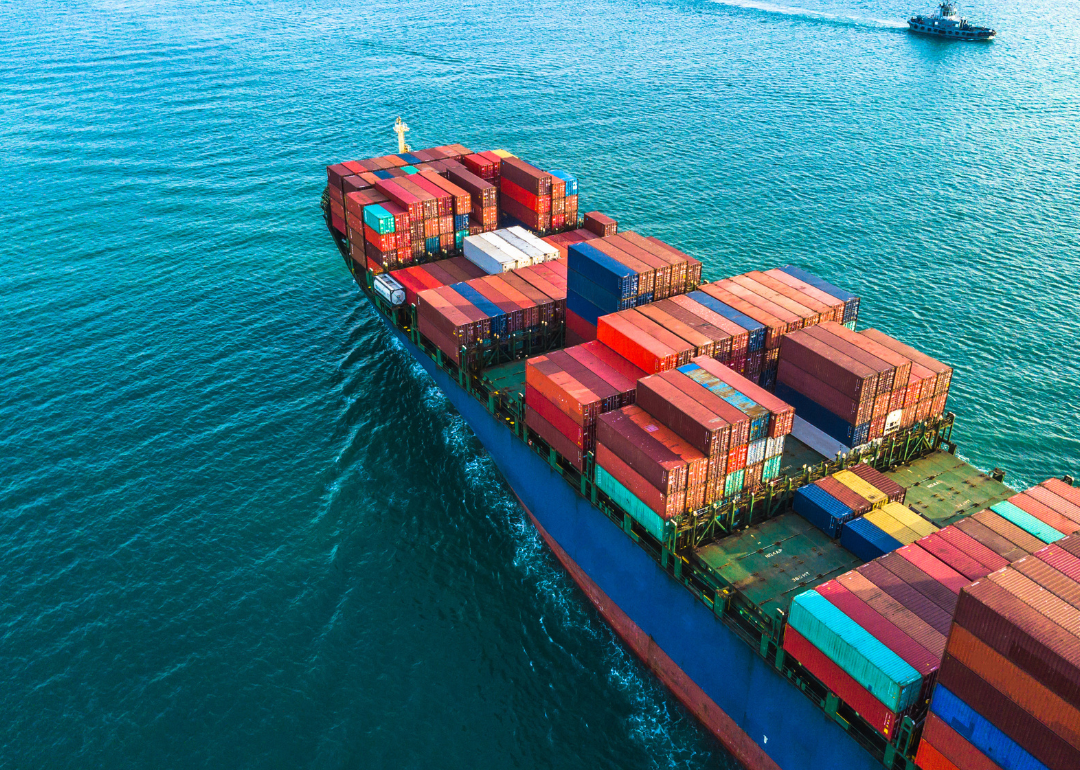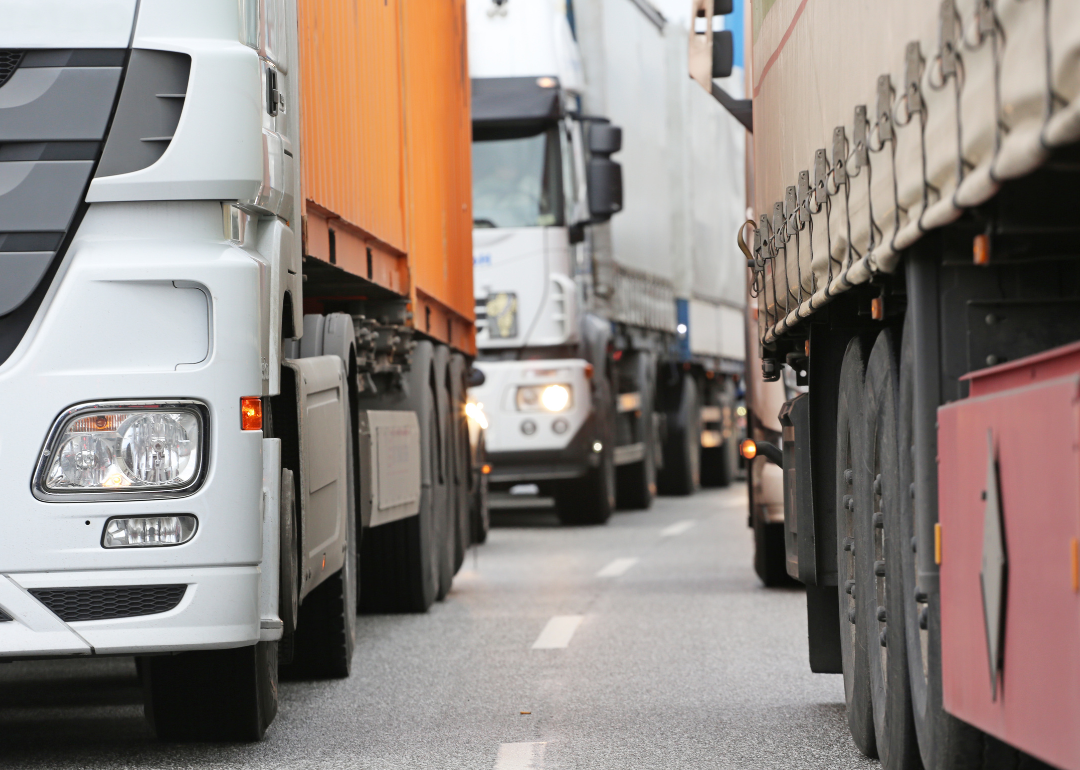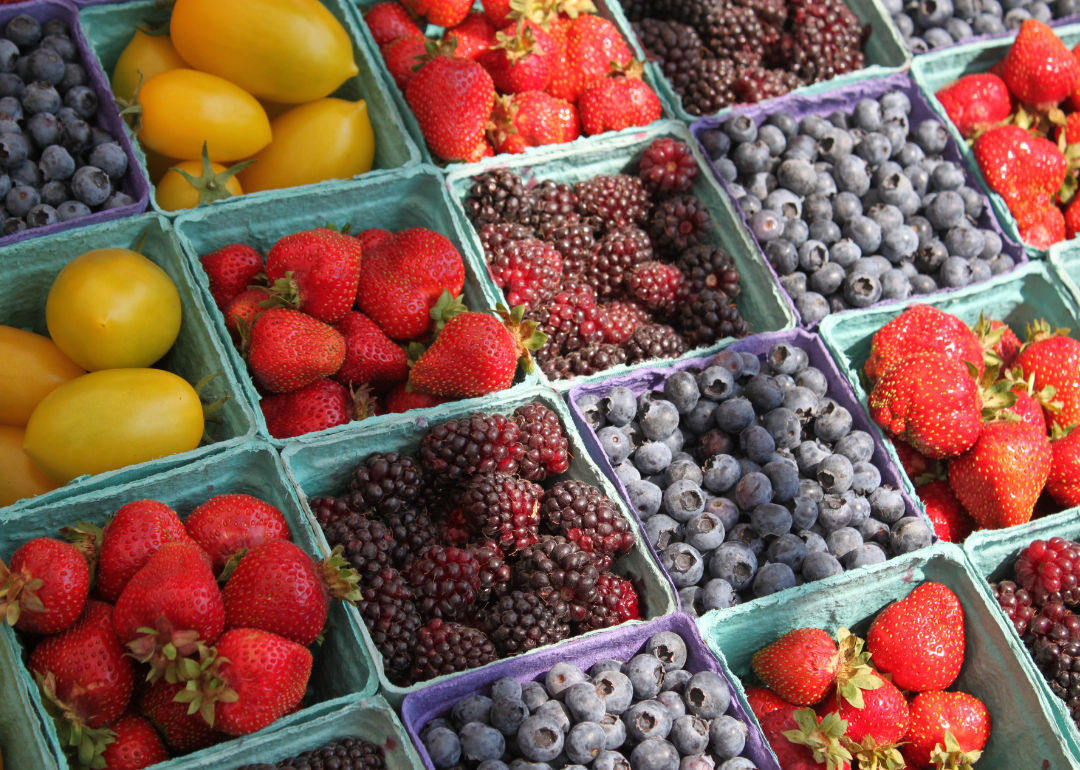20% of carbon emissions from the food creation chain come from shipping

Aleksandar Malivuk // Shutterstock
20% of carbon emissions from the food creation chain come from shipping
A worker standing by apple fruit crates ready for shipping in an organic food factory warehouse.
About 15% of all food consumed by Americans, including 32% of fresh vegetables, more than half of all fresh fruit, and nearly all seafood, is imported from more than 200 countries and territories worldwide. This is just one series of links in a complex global food creation chain.
Thistle analyzed the findings of the 2022 study published in Nature Food on global food-miles to synthesize key points regarding carbon emissions in the food supply chain and some of the supporting data about the global impact of food systems.
When we think about where our food comes from, we may think of a linear journey from point A to point B. This is essentially the basis for “food-miles”—the distance food travels from where it is produced to where it is consumed—which measures a food’s carbon footprint. Food-miles are measured in ton-kilometers per year—a unit representing the transport of 1 ton of goods over a distance of 1 kilometer.
The more miles a food item travels, including collective miles for goods made of multiple ingredients, the less sustainable that item becomes. The mode of transportation is another major factor in determining a food’s carbon emissions. Air transport emits more greenhouse gasses than shipping the same amount of food by boat, for example.
The study published in Nature Food shows that greenhouse gas emissions associated with global food-miles, or the transport of food items, are between 3.5 and 7.5 times higher than experts previously believed.
A new model used to evaluate the environmental impact of food-miles factors into the extensive upstream resources expended before the food is even shipped, such as transporting fertilizer to grow the food or equipment to transform land for agricultural production. Updated estimates show transport accounts for nearly 20% of all emissions associated with the food creation chain.
![]()

Avigator Fortuner // Shutterstock
Maritime shipping accounts for the majority of all food-miles
An aerial view of a cargo ship filled with shipping containers.
Of all the ways food is transported worldwide—via planes, trains, trucks, and ships—air transportation has the most severe environmental impact. Fortunately, only a small fraction of the global food supply—just 0.16%—is transported by air, according to the most recent accounting of food supply transportation means.
Due to its speed, air transportation is typically reserved for highly perishable foods like fruits and vegetables. More than 90% of all international food transportation relies on maritime shipping. Despite still releasing CO2 emissions, ships are the most effective way to move large amounts of food, even temperature-controlled food, along the supply chain.

Canetti // Shutterstock
Around 6% of global greenhouse gas can be traced to food transport
Trucks stuck in a traffic jam on the highway.
Emissions from transporting food from its place of origin to the consumer are roughly 8.4 billion tonne-kilometers (tkm)—about 1.4 gigatons of CO2. When upstream activities along the supply chain are factored in, emissions more than double to 22.2 billion tkm, about 3.0 GtCO2e, representing 6% of all global greenhouse gas emissions. The entire food system, more broadly, is responsible for one-third of all greenhouse gas emissions caused by humans.

Canva
High-income countries disproportionately generate more food-miles
A grocery store’s produce department.
High-income countries—defined within the study as those with a per-capita GDP greater than $25,000—represent roughly 12% of the global population but contribute to nearly half of all international food-miles and related emissions.
High-income regions, including North America, Europe, and Oceania, have per-capita food-miles and emissions almost three times that of other regions. Dietary habits of high-income countries, like purchasing nonseasonal produce, are the primary drivers behind international food-miles. Countries with large amounts of agricultural land in use, like Russia, China, India, and the U.S., also tend to generate high domestic emissions.
One caveat to these results is that the study employs a per-capita high-income economy threshold greater than other economic sources, such as the World Bank, which as of 2023, sets the threshold at $13,205 or higher.

Canva
Buying local isn’t a free pass
Fresh berries packaged in cardboard at the farmer’s market.
Buying local is an important step toward lowering carbon emissions generated by the food creation chain because it cuts down on the distance food must travel. However, domestic food supplies typically rely on trucking as the primary form of transport, which has a much higher carbon footprint than maritime shipping.
As an emissions reduction strategy, buying local is most effective when consumers purchase highly perishable foods like seafood, berries, and certain vegetables close to home, as these tend to be transported by plane. Importing these items is often more beneficial for produce that doesn’t require refrigeration.
To have the most significant impact, buying local must also be coupled with a change in consumer habits, like consuming less red meat and more plant-based items. Red meat has an enormous carbon footprint due to the resources that go into raising and processing livestock.

Scharfsinn // Shutterstock
The future of food will require investment in eco-friendly transit
A green, electric truck charging in a parking lot.
Fruits and vegetables require temperature-controlled transportation, which increases their food-miles emissions. Transporting these items worldwide generates 36% of all food-mile emissions—double the amount released during production.
Advancing transportation technology, like moving away from fossil fuels and toward clean energy, especially in trucks, would help reduce domestic emissions while making buying local food more viable and sustainable.
This story originally appeared on Thistle and was produced and
distributed in partnership with Stacker Studio.